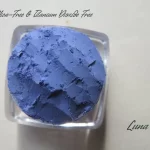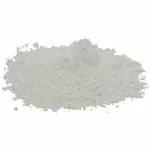Title: Porous Boron Nitride Fiber: An Innovative Material for Advanced Applications
Introduction:
Porous materials have gained significant attention in various industries due to their unique properties and applications. Among these materials, porous boron nitride fiber has emerged as a promising candidate for a wide range of advanced applications. This article will delve into the characteristics, synthesis methods, and potential applications of porous boron nitride fiber.
Characteristics of Porous Boron Nitride Fiber:
Porous boron nitride fiber possesses several noteworthy characteristics that make it desirable for various fields. Firstly, its high surface area provides ample space for adsorption or catalytic reactions. Secondly, its excellent thermal conductivity enables efficient heat dissipation. Additionally, its mechanical strength and flexibility make it suitable for use in flexible electronic devices. Lastly, its chemical stability ensures durability in harsh environments.
Synthesis Methods:
Various techniques have been developed to synthesize porous boron nitride fiber. One commonly used method is the template-assisted approach. In this method, a sacrificial template, such as a carbon fiber or polymer, is coated with a boron nitride precursor. After the pyrolysis process, the template is removed, leaving behind a porous boron nitride fiber structure. Other methods, such as chemical vapor deposition and hydrothermal synthesis, have also been explored to produce porous boron nitride fiber with different pore sizes and structures.
Applications:
1. Energy Storage:
Due to its high surface area and excellent electrical conductivity, porous boron nitride fiber holds great potential in energy storage devices. It can be used as an electrode material in supercapacitors, enhancing their energy storage capacity and power density. Furthermore, its thermal conductivity can facilitate efficient heat dissipation, improving the overall performance and safety of energy storage systems.
2. Environmental Remediation:
The unique adsorption properties of porous boron nitride fiber make it an ideal material for environmental remediation applications. It can effectively adsorb a wide range of pollutants, including heavy metals, organic compounds, and gases. Its high selectivity and large surface area enable efficient removal of contaminants from both air and water, contributing to the development of sustainable and eco-friendly solutions for environmental challenges.
3. Biomedical Engineering:
Porous boron nitride fiber exhibits biocompatibility and excellent mechanical strength, making it suitable for biomedical engineering applications. It can be utilized in tissue scaffolds, drug delivery systems, and biosensors. Its porous structure allows for controlled drug release and promotes cell adhesion and proliferation, facilitating tissue regeneration and wound healing processes.
4. Thermal Management:
With its exceptional thermal conductivity, porous boron nitride fiber finds application in thermal management systems. It can be used as a heat sink material in electronic devices, efficiently dissipating heat generated during operation. This helps prevent overheating and ensures the long-term stability and reliability of electronic components.
Conclusion:
Porous boron nitride fiber represents a remarkable advancement in material science, offering unique characteristics and promising applications across various industries. Its high surface area, thermal conductivity, mechanical strength, and chemical stability make it a versatile material for energy storage, environmental remediation, biomedical engineering, and thermal management. Continued research and development in this field will undoubtedly unlock further potential and expand the applications of porous boron nitride fiber in the future.
.webp)




